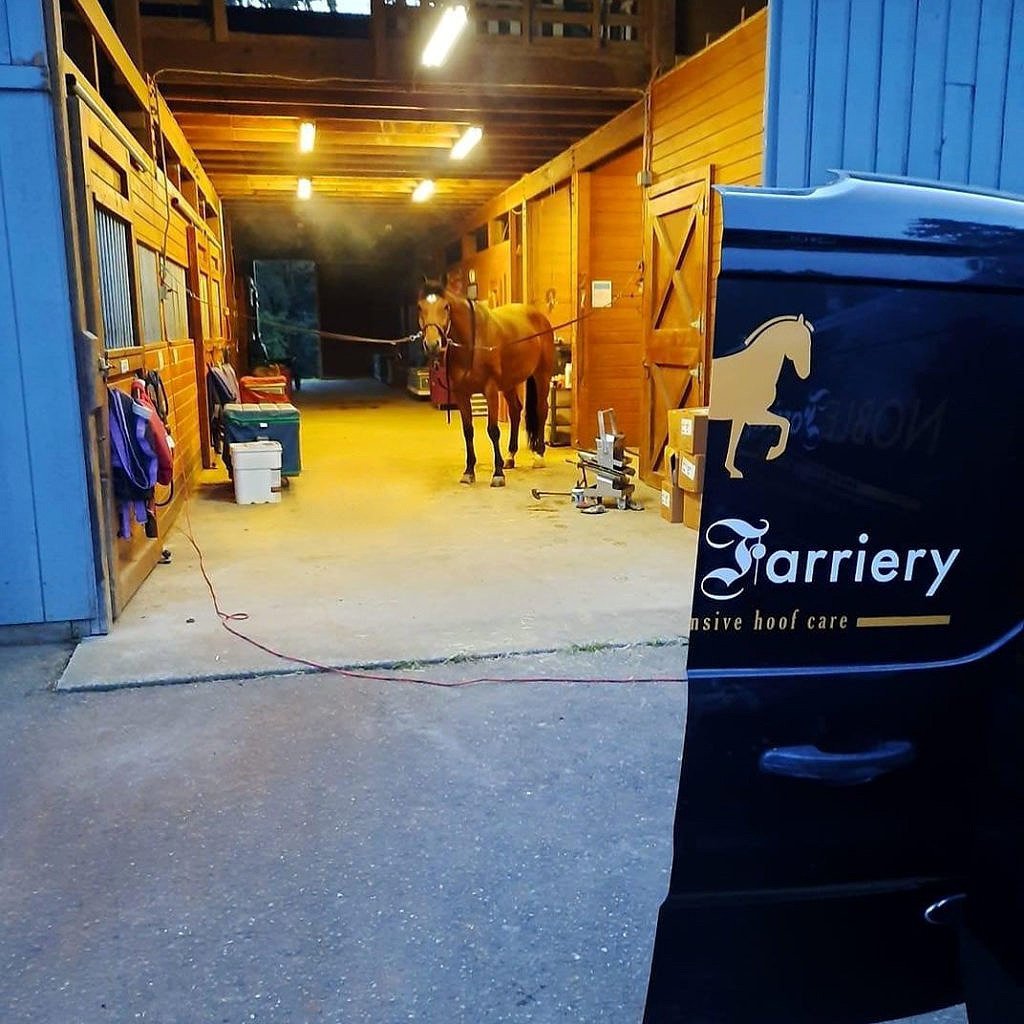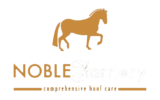Our Culture Of Safety
Our Culture of Safety
At Noble Farriery, we pride ourselves on our Culture of Safety. If you have spent a lot of time around barns and horses, you know that they can be dangerous places. In fact, farriery is considered more dangerous than firefighting and construction by insurance companies.
We are proud to provide L&I insurance for our farriers and assistants, but that’s not all. Noble Farriery is on the front lines among farriery businesses in establishing a Culture of Safety program for our company in compliance with Washington State Law. After all, having insurance is important, but never needing it is better.
What this means for clients is that we will be vigilant in ensuring that our team and the horses that we serve are as safe as possible on every property. We have implemented safety procedures, which includes a thorough checklist for barn safety protocol. We provide this to our clients in person, and you can see it below.

Our Culture of Safety: What To Expect
Noble Farriery holds mandatory monthly Safety Meetings with our team, and we have a communication plan for our farriers to help educate clients on state law requirements. Should there be any issues that arise while we are on your property, we will be prompt to let you know via email:
How you can make your barn safer
The exact steps to take
The time-frame in which the safety measure must be achieved before the next shoeing
Safety issues are fluid and change, as does state law. Our Culture of Safety is ever evolving and growing, and we are excited to work together with you on helping to keep farriers, horses, and the whole equine care team as safe as possible.
Barn Safety Guidelines
Barns receiving our farriers must adhere to the following guidelines to the best of their ability. If adhering to any listed items is not possible, please notify Noble Farriery in advance. For more info and advice, see an article by Principle Farrier Seth Noble in Chronicle of the Horse: From The Farrier: 8 Tips For Safer Shoeing.
Disruptive Activities
Please ask permission before carrying out activities that may be loud or disruptive to horses being shod or stalled nearby. Examples of disruptive activities can include but are not limited to; using power tools, landscaping, playing loud music, clipping a horse, training with aids like flags, whips, tarps, etc.
Dogs must be brought indoors or tied prior to appointments
Hay Lofts
It is crucial that our farriers be notified by barn personnel before climbing up in the hay loft and throwing down hay. If dropping multiple bales down, please let our farriers know the number you plan to drop and wait for the “All Clear” from those below. Our farriers need time to prepare themselves and move their tools in case a horse startles from the commotion above.
Barn Aisle Safety
Barn entrances and aisles are high-traffic areas and, therefore, need to be wide enough and free of clutter in order to provide a safe environment for horse and handler.
- Please provide a level, dry work area with vehicle access.
- Please provide ample lighting, access to water, and electrical outlets.
- Ceilings and light fixtures need to be sufficiently high to reduce the risk of a rearing horse striking its head, breaking bulbs, injuring themselves, and causing a fire hazard.
- Non-slip floor surfaces reduce the risk of horses sliding and falling.
- The work area should be free of clutter from farm utensils, such as rakes, pitchforks, wheelbarrows, buckets, and tack trunks.
- If available, please use alternative paths for bringing horses in and out of the barn so that our farriers may work with minimal interruptions.
- Never pass by a horse when a farrier is working underneath them. Please ask for the farrier’s permission to pass so they have time to move.
Safely Tying
There are several safety considerations to keep in mind when creating a space to tie. A horse that is improperly tied can become injured or injure someone else.
- Tie a rope in a quick-release knot, or secure it to a breakaway device. (Twine loops as breakaways are a cheap and effective option)
- If your horse will not stand safely for the appointment, please have arrangements in place to schedule a handler to hold for the duration of the appointment and/or administer sedation.
- Nervous horses or horses new to shoeing must be scheduled with a handler in advance.
